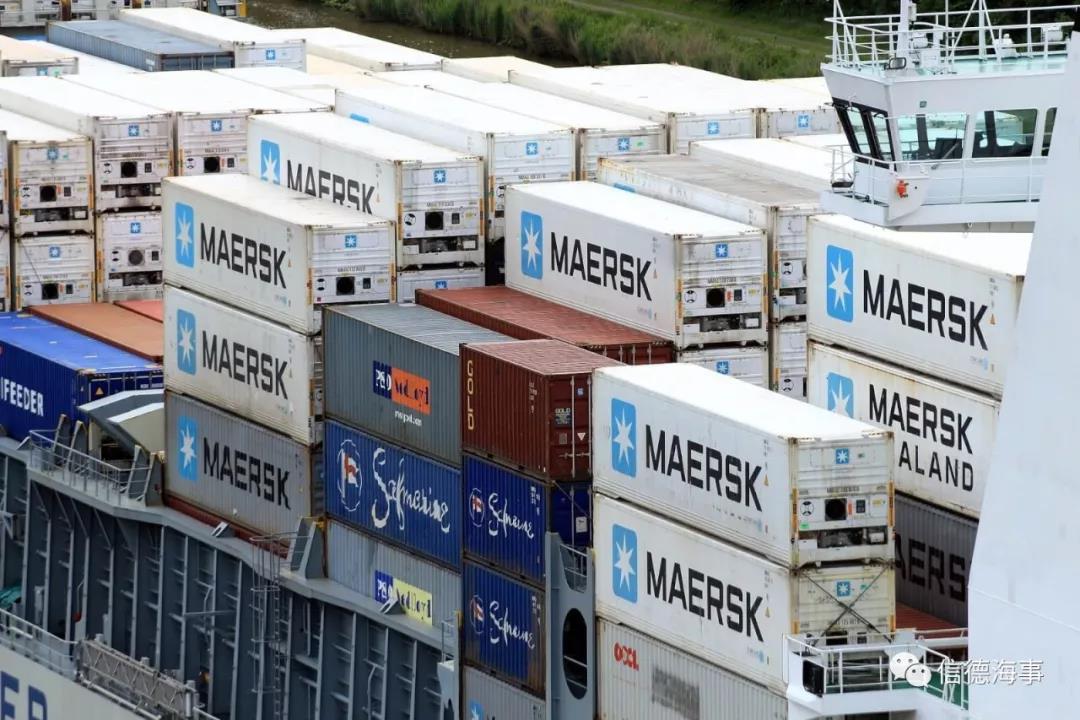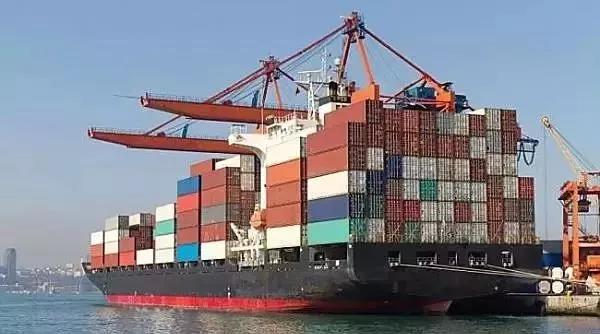Guide for damage prevention in refrigerated container transport
Source: Author:FLOURISHING MARINE SERVICE Time:2019-03-18

As we all know, a large part of the claims in the cases of reefer container transportation are from the claims of goods, which are usually caused by the failure to maintain the set temperature during the transportation process, resulting in the loss of goods. Due to the high frequency and severity of cargo cases on reefer container ships, insurance and indemnity insurers are very cautious in underwriting reefer cargo and are often unwilling to cover cargo liability. Based on the transportation of temperature-controlled goods in refrigerated containers, this paper provides relevant guidance to assist the owners of refrigerated container ships to protect the goods in the transportation process as far as possible. The following Suggestions are provided for your reference.

Loading and shipping instructions
• the ship shall be equipped with refrigerated spare parts, tools and maintenance manuals for the manufacturer of the relevant refrigerated equipment. These facilities shall be used by the engineer on board when emergency repairs are required during the voyage. There are different types of refrigeration equipment, each with its own repair and maintenance characteristics.
• the amount of refrigerant supplied shall be determined according to the type and quantity of refrigerating containers carried on board.
• prior to shipment, it is essential to obtain detailed instructions from the shipper on all shipping conditions, including temperature, ventilation and humidity requirements. The recommendations of the international cold chain technology (ICCT) on conditions of transport are available on the ICCT website.
• if the vessel is loading at the loading port, an surveyor shall be appointed to monitor the temperature at arrival of the cargo and to note any details inconsistent with the specification requirements.
• any special requirements of the charter party relating to refrigerated transport, such as monitoring procedures, repair requirements, parties to be notified in case of failure, etc., shall be strictly observed and appropriate instructions shall be given to the ship in writing.
• there should be a refrigerated operation manual on board, specifying the conditions of transport for refrigerated cargo loading, possible problems and an overview of problem resolution procedures. If problems occur that are not covered by the manual, seek expert advice.
• at the start of loading, the crew should recheck that the ship's power outlets are compatible with the plug of the cooler and that the quantity is sufficient for all loaded coolers. If necessary, a sufficient number of change-over plugs should be prepared.
• in case of a power outlet failure, spare cold extension leads should be provided.
• after the refrigerator is powered on, lock the plug and socket with a locking ring. It should also be checked to ensure that the refrigerated socket box is completely closed to prevent water from entering during the voyage.
• after the refrigerating tank is loaded and the power is switched on, an experienced crew should be arranged to check and confirm that the refrigerating device is running and the temperature is gradually reaching the set value. If the refrigerating plant does not work, basic inspection measures should be taken.
• many claims for refrigerated goods result from confusion of degrees Fahrenheit and Celsius, plus and minus temperatures. When refrigerated cargo is loaded on board, care must be taken to ensure that the temperature is set correctly. Any discrepancies between the actual temperature setting and the cargo instructions should be reported immediately.
• during the voyage, refrigerated temperatures should be checked at intervals not exceeding six hours. Record the inspection time, air supply temperature and air return temperature each time. The details of any problems encountered should be recorded in an appropriate record book. In addition, the automatic recording can transmit relevant signals to the central point through the cable. The system should be checked periodically to avoid error messages.
Temperature and defrosting
Ice forms on the evaporator coils during the operation of the refrigerating unit, depending on the set temperature, the temperature of the cargo, the amount of fresh air in the ventilation unit, and the humidity of the cargo. The refrigeration unit periodically enters a defrosting state, where heat is generated by a series of electric heaters or hot air is blown into the evaporator coil. All the fans will stop turning at this point to prevent hot air from entering the cargo hold. However, since the return air temperature sensor is located close to the refrigeration unit, such temperature rise may be recorded. Therefore, unless processed by data recording software, temperature records will show periodic temperature increases consistent with defrosting intervals. If the duration of defrosting is short, the hourly temperature reading may differ from that during defrosting.
It should be noted that such an increase in temperature reading does not immediately affect the actual temperature of the cargo nor does it imply that the refrigeration unit is in an unstable state. In addition to temperature, electronic data records usually show defrosting intervals and durations. If the loading temperature exceeds the set temperature, the refrigerating unit will automatically start lowering the cargo temperature to the required level. If the cargo has defrosted, the freezer will attempt to cool the cargo but will continue to defrost frequently.
In addition to the set value of the cargo and the air supply and return temperatures, the temperature control system provides detailed information about the system problems in the form of error codes. Cargo temperatures are recorded by the USDA detector installed to comply with the USDA's refrigerated handling procedures for fruit transportation. The shipper's data recorder placed on the cargo will also record the general temperature. When the refrigeration unit fails, the temperature display and data recording will show a gradual and steady temperature rise until the ambient temperature value is finally reached. Again, the sensors only record air temperature, not cargo temperature. The goods will be protected to some extent by the surrounding thermal insulation to prevent the impact of external air temperature.
Temperature record
The data recorder monitors the temperature of supply and return air in the refrigerated cargo hold and the data is stored in electronic memory. The memory also records pretest results and alarms, as well as a series of data exchanges with controllers and electrical devices. The data can be downloaded directly to a computer, which can then be printed, stored or sent as an E-mail attachment. If the data recorder is able to record the "start trip" information, this information should include the origin and destination of the goods. Check to make sure the date and time information is correct.
goods
Usually, refrigerated goods can be divided into two types:
• refrigerated
• frozen
Many refrigerated goods, such as fruit, are considered "live" goods because they can still breathe after being picked and are easy to dry due to autothermia, precocity, dryness (wilting and withering) and other conditions
Decay. However, other commodities such as frozen meat/fish and cheese are not. Fruit usually not less than the minimum set temperature 1.1 ℃ (30 ° F). Frozen goods, on the other hand, is usually considered a "inert (inert)" goods, usually in - 18 ℃ (0 ° F) carrier or lower temperatures. Since both refrigerated and frozen goods are perishable, care must be taken to ensure that such goods are delivered in the best condition. For refrigerated goods, with a limited number of exceptions (such as meat, chocolate, film, chemicals, dairy products, and artificially air-conditioned storage and transportation), the ventilation is usually left on. Some goods may require humidity control or plenty of fresh air (such as bulbous flowers). It should be noted that most refrigeration units can only reduce humidity and this depends on the amount of fresh air provided. Artificially air-conditioned storage and transport requires the use of special-purpose containers that can replace oxygen levels with nitrogen and carbon dioxide to extend the shelf life of picked products. This method is suitable for many fruits with and without seeds, but requires professional knowledge to determine the optimum gas concentration level.
The goods inspection
As far as practicable, the temperature of refrigerated fruits and vegetables and the central temperature of frozen goods should be tested before packing. Fruits and vegetables should also be checked for presence such as mildew, wilt, dehydration, wilting, discoloration, and softness
Spots, peeling and peeling, bruises, frostbite, and stink before refrigeration. The frozen cargo should also be examined for dehydration, dryness, displacement, stink, black spots and color changes, and for signs of refreezing after thawing due to temperature rise. Cartons, pallets and other packing materials should also be checked to see that they are in good condition and that they can protect the goods during the whole process of shipping.
If the refrigerating machinery fails or becomes unstable during the voyage of the ship and cannot be repaired on board, the ship shall notify the office or agent of the next port of such failure so that repairs can be arranged upon its arrival at that port. In such cases, inspectors should be assigned to examine the breakdown details and evaluate the condition of the container cargo.
If the cooler suffers physical damage, inspectors should also be assigned to investigate the extent of damage and to ensure that measures are taken to reduce potential cargo losses. The carrier may be allowed to open the lead seal of the container to take measures to reduce the potential loss unless otherwise stipulated in the contract of carriage clause embodied in the bill of lading. The method of inspection depends on the type of goods. In such cases, inspectors or experts shall be appointed to supervise the operation.
 简体中文
简体中文 ENGLISH
ENGLISH

